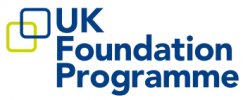Team Assessment of Behaviour (TAB)
Frequency: One in the first placement of both F1 and F2, optional repetition
Blank form: TAB form
Guides:
Placement Supervision Group (PSG)
Frequency: One in the first or second placement of both F1 and F2, optional repetition
Blank form: PSG individual feedback form
Guides:
– Guidance for all users
– Factsheet
– Research on PSG
– The Placement and supervision group YouTube video
Further information:
The PSG is a group of individuals allied to the FD’s placement, who interact with the FD on a daily or weekly basis and who can provide constructive senior feedback on the FD’s clinical performance both to the FD themselves and the clinical supervisor (CS).
The PSG collection of rater feedback works in a similar way than Team Assessment of Behaviour (TAB), but the information that is collected, and its purpose, is different. The development of the PSG feedback process has been driven by foundation doctors. While TAB provides FDs feedback on their general behaviours, PSG provides feedback on their competence as a doctor and how well they understand clinical aspects / situations.
There is no minimum number of members needed in the PSG, but ideally at least 3 colleagues will contribute. The clinical supervisor can ask senior nursing staff, senior consultants, GPs, or other members of the multidisciplinary team. The PSG is driven by the supervisor (not the foundation doctor) and the information gathered can help inform the end of placement report.
Clinical supervisor’s end of placement report
Frequency: One per placement
Blank form: Clinical Supervisor End of Placement Report
Guide: Guidance for CSs
Example forms:
– Clinical supervisors end of placement report- no concerns
– Clinical supervisors end of placement report – with concerns
Educational supervisor’s end of placement and year reports
Frequency (ES EPR): One per placement (except final placement, when ES end of year report required)
Blank forms:
– Educational Supervisors End of Placement Report F1
– Educational Supervisors End of Placement Report F2
Guide: Guidance for ESs
Frequency (ES EYR): One per year (in final placement)
Blank forms:
– Educational Supervisors End of Year Report F1
– Educational Supervisors End of Year Report F2
Further information:
Internal Medicine Training e-learning programme – supervisor report guidance
Created jointly by Health Education England’s elearning for healthcare (elfh) and the Joint Royal College of Physicians Training Board (JRCPTB), the programme aims to set out how to write a meaningful and effective Educational Supervisor Report (ESR) for Internal Medicine training. The information is also helpful for supervisors of foundation doctors. This module sets out how to prepare to write an ESR, considered by the Annual Review of Competency Progression (ARCP) panel when assessing a foundation doctor’s progress, starting with the initial meeting with the foundation doctor, planning the training year and gives examples of good report writing. The following areas are covered:
– The ESR
– Capabilities in Practice (CiPs)
– Evidence
– Setting up the Training Year
– Some elements of the ARCP
For more information about the programme, including access details, visit: https://www.e-lfh.org.uk/programmes/internal-medicine-training/
Curriculum mapping
Frequency: Throughout the year
Guide: Guidance on curriculum mapping
All 13 foundation professional capabilities (FPCs) must have sufficient evidence mapped to them to demonstrate satisfactory progress.
Foundation doctors can map:
– a maximum of 10 portfolio items to a foundation professional capability (FPC)
– each portfolio item to a maximum of 3 FPCs
Personal learning log
Frequency: Throughout the year
Guide: Guidance on personal learning log
An acceptable attendance record at generic foundation teaching is required (see guide above for further information).
